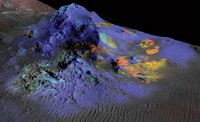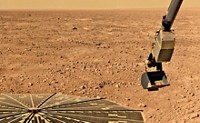Advertisement
Grab your lab coat. Let's get started
Welcome!
Welcome!
Create an account below to get 6 C&EN articles per month, receive newsletters and more - all free.
It seems this is your first time logging in online. Please enter the following information to continue.
As an ACS member you automatically get access to this site. All we need is few more details to create your reading experience.
Not you? Sign in with a different account.
Not you? Sign in with a different account.
ERROR 1
ERROR 1
ERROR 2
ERROR 2
ERROR 2
ERROR 2
ERROR 2
Password and Confirm password must match.
If you have an ACS member number, please enter it here so we can link this account to your membership. (optional)
ERROR 2
ACS values your privacy. By submitting your information, you are gaining access to C&EN and subscribing to our weekly newsletter. We use the information you provide to make your reading experience better, and we will never sell your data to third party members.
Physical Chemistry
Phoenix Mars Lander Update
by Elizabeth K. Wilson
October 6, 2008
| A version of this story appeared in
Volume 86, Issue 40

As the martian winter approaches, foretelling the likely end of NASA's Phoenix mission, the lander is struggling to finish up its extended study of northern martian soil, which includes delivering soil samples to onboard gas analyzers and a wet chemistry lab. At a press conference on Sept. 29, team scientists reported evidence for falling snow, which melted before it hit the ground. They also reported the definite detection of calcium carbonate in the soil, although detection of a silicate-based clay remains ambiguous. Both minerals suggest an interaction with a past watery environment. Paradoxically, probes inserted into the surface show that the soil is extremely dry, even though there's an ice layer a few inches belowground. Scientists continue to puzzle over the finding of perchlorate ions, ClO4–, which can act as a desiccant (C&EN, Aug. 11, page 13). That might be why the soil is so dry, they said. Although there's been scant evidence for organic compounds, the scientists will continue to look for them as Phoenix finishes its last experiments. The craft's optical microscope also captured an image of magnetically separated multicolored soil grains.




Join the conversation
Contact the reporter
Submit a Letter to the Editor for publication
Engage with us on Twitter